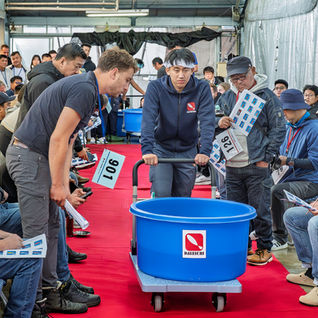Discover Niigata: Nature, History, and Culture of Japan
- Kevin Warren

- Apr 30
- 3 min read
Updated: 5 days ago
Niigata Prefecture, located in Japan's Chubu region, stands as the nation's fifth-largest prefecture, encompassing an area of 12,584.18 km² (4,858.78 sq mi). Its capital city, Niigata, serves as the prefecture’s largest urban center, complemented by other significant cities such as Nagaoka, Joetsu, and Sanjo. Spanning 240 km (149 mi) along the rugged coastline of the Sea of Japan, Niigata also includes Sado Island, Japan's sixth-largest island, ranking behind Honshu, Hokkaido, Shikoku, Kyushu, and Okinawa.
Nature and National Parks
Since April 2014, approximately 25% of Niigata Prefecture has been recognized as national parkland, making it a vital destination for those passionate about the natural world. Distinguished national parks such as Bandai-Asahi, Chubu-Sangaku, Nikko, and Oze, along with 13 prefectural parks, offer unique landscapes for exploration. The mighty Shinano River, Japan's longest, completes its journey within the prefecture, further enhancing Niigata’s natural beauty.

The Fukushimagata Lagoon, situated in eastern Niigata City, represents one of Japan's most significant biodiverse wetland habitats, covering approximately 260 hectares. Home to over 220 bird species and 450 types of plants, Fukushimagata is essential for researchers, naturalists, and conservationists alike.
Skiing Heritage
For skiing enthusiasts, Niigata Prefecture is renowned for its resort areas, notably Myoko and Yuzawa.
Myoko is framed by majestic mountains, including Mount Madarao, Mount Myōkō, Mount Kurohime, Mount Togakushi, and Mount Izuna. Additionally, the region hosts two of Japan's 100 Famous Mountains: Mount Hiuchi and Mount Takatsuma. Established in the 1930s, Akakura Resort stands among the oldest ski resorts worldwide. The Myōkō ski region consists of nine notable resorts, including Myōkō Akakura and Myōkō Suginohara, famous for boasting Japan’s longest ski run.
Naeba Ski Resort is a year round entertainment attraction Photo:AdobeStock
Yuzawa, coupled with the neighboring towns Minamiuonuma and Minakami, represents the most accessible ski region from Tokyo, served conveniently by the Joetsu Shinkansen via Yuzawa, Echigo-Yuzawa, and Gala-Yuzawa stations. The area includes ten major ski resorts, notably Naeba Ski Resort, GALA Yuzawa Resort, Iwappara, and Kagura Ski Resort. The renowned Fuji Rock Festival, Japan's largest outdoor music event, occurs each summer at Naeba Ski Resort.
Cultural and Historical Significance
While Kyoto may often overshadow other Japanese regions in cultural and historical significance, Niigata Prefecture also offers culture and historical treasures. Yahiko Shrine, nestled at the base of Mount Yahiko, attracts over 200,000 annual visitors during Hatsumode celebrations, known particularly for granting blessings related to love and fortune.

Hakusan Shrine in Niigata City, dedicated to the deity of marriage, stands as another culturally vital location, its history spanning over a millennium. Other significant shrines include Kota Shrine, Gokoku Shrine, and Hotokusan Inari Taisha Shrine. Additionally, traditional Edo-period architecture, thatched-roof homes, and villages scattered throughout the prefecture offer an immersive glimpse into Japan's rich historical past.
Agriculture, Koi Farming, and Industry
Niigata Prefecture leads Japan in rice production, primarily within the extensive Echigo Plain, covering about 2,000 km². The Uonuma region is particularly noted for its premium Koshihikari rice, widely regarded as the finest quality rice grown in Japan. Rice cultivation fuels related industries in Niigata, particularly sake production, rice crackers (senbei), mochi, and arare. Niigata is Japan’s third-largest sake producer, following Gunma and Kyoto prefectures.

Koi farming, aquaculture, originating in Ojiya, has developed into a significant yet often overlooked industry. Nishikigoi, known globally as koi, is a leading agricultural export for Japan making the Koi Breeders and their “Living Jewels” an intricate part of both the Niigata Prefectural and Japanese Economies.
Additionally, Niigata dominates Japan’s floriculture sector, producing the highest volumes of azaleas and cut lilies. The cultivation of tulips also remains significant, rivaled closely by Toyama Prefecture.
The cities of Sanjo and Tsubame underscore Niigata's manufacturing prowess, producing approximately 90% of Japan’s silverware and ranking just behind Osaka in knife, wrench, and scissor manufacturing.
This brief summary of Niigata Prefecture should open your eyes to what exists in a more “off the beaten path,” rural part of Japan. Yes, visit Tokyo, Kyoto, Osaka, just don’t forget that the wonderful sake, amazing rice, and more may have originated in Niigata. Discover Niigata Japan
Click to expand














